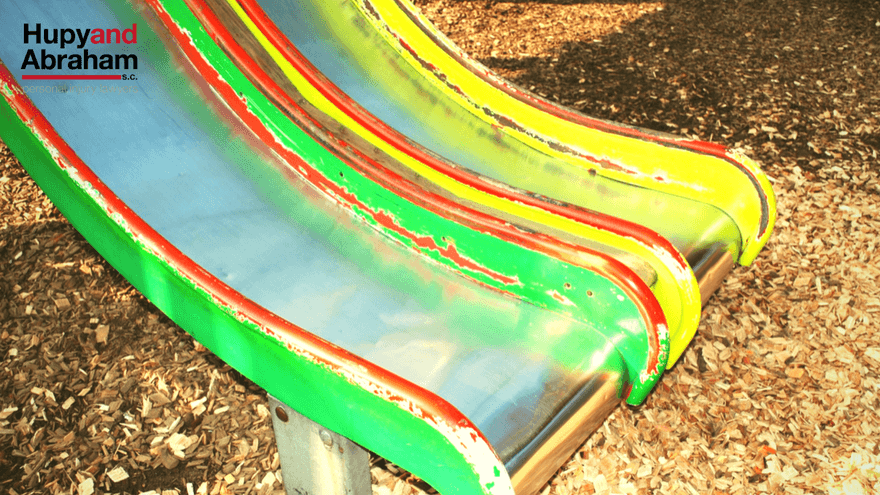Playground Safety

Parents know that kids have a LOT of energy and, sometimes, the only cure is physical exhaustion resulting from hours of running, swinging and sliding. However, many parents may note that the equipment and physical state of a playground can pose a risk of injury to the kids who play there.
According to the Centers for Disease Control and Prevention, more than 200,000 children are injured on playgrounds each year, many of which are serious. When it comes to the law, if children are playing and hurt themselves because of their own actions, you are likely responsible for the injuries. However, if a city, owner or other agency is responsible for maintaining a playground and have not ensured its safety, then it/they can be held liable. But in order to receive compensation for a playground accident, you must prove the following:
- The property owner had a legal duty to keep your child safe.
- The property owner knew or should have known there was a dangerous condition at the playground.
- The property owner had an opportunity to repair or warn of the dangerous condition.
- The property owner did not repair or warn of the dangerous condition before your child was injured.
Here are seven signs that a playground is unsafe:
- Playground equipment is surrounded by dirt, grass, asphalt or concrete. These surfaces don’t have shock-absorbing properties like sand, pea gravel, wood chips, mulch, rubber or synthetic turf.
- The shock-absorbent surfacing is very shallow and located only under the play structures. To be safe, shock-absorbent surfacing like wood chips should be at least 12 inches deep and extend at least six feet in all directions around a play structure.
- Big children and little children are sharing the same playground equipment and play area. It is safer to have a separate playground for children under five.
- The park does not have age-appropriate playground equipment.
- The playground has broken or damaged play structures.
- The play area is overcrowded. Swings should be set far enough away from other equipment that children won't be hit by a moving swing.
- Protrusion hazards are located around the park. Beware of hardware that is capable of impaling or cutting a child (bolts, hooks, rungs, etc.), or catching strings or items of clothing. Children should never wear drawstring hoodies at the playground.
Don’t allow your children to play at a playground that appears unsafe. Don’t be afraid to report any dangerous conditions to the organization responsible for playground maintenance.
Playtime shouldn’t be dangerous. If your child is injured on a dangerous playground, the government entity or business responsible for maintaining the playground may be held liable for their injuries. Contact an experienced personal injury attorney right away for assistance. At Hupy and Abraham, we offer free consultations and would be happy to answer any questions, contact us online at hupy.com or give us a call at 800-800-5678.
For more information visit www.hupy.com
